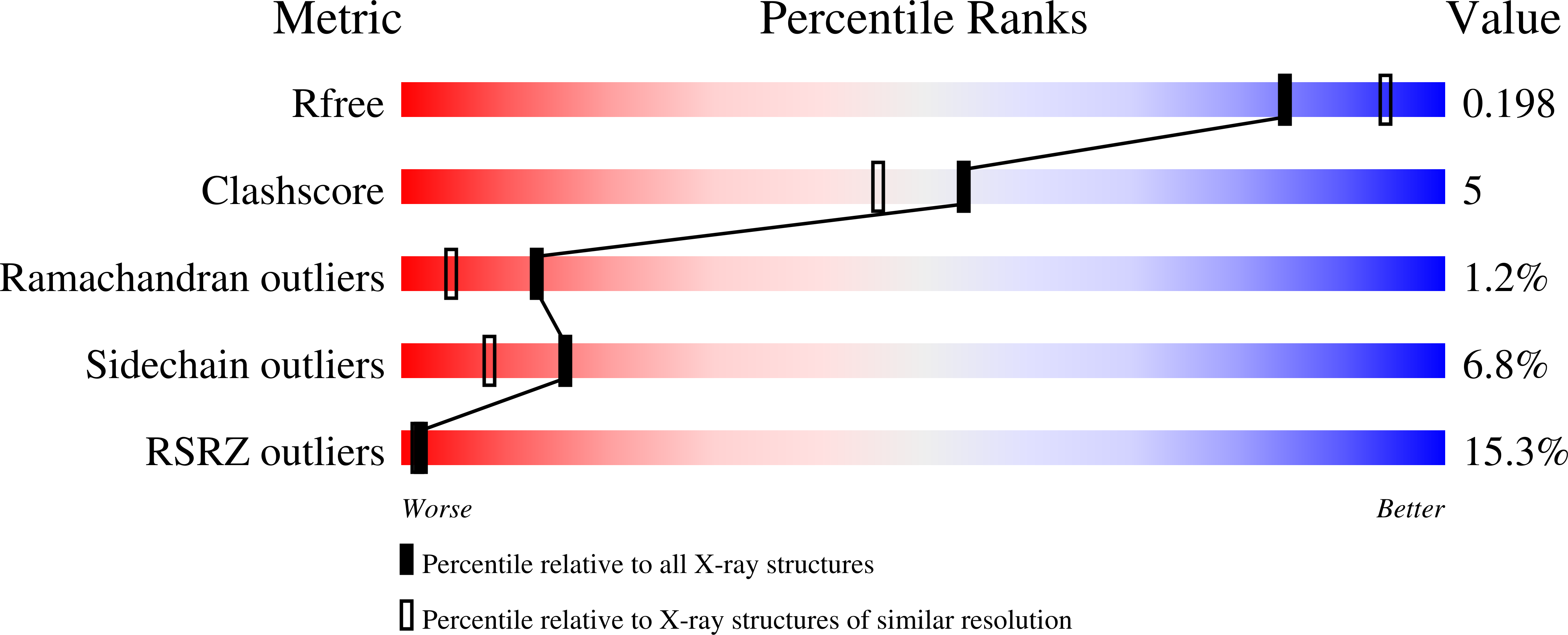The structure of human ADP-ribosylhydrolase 3 (ARH3) provides insights into the reversibility of protein ADP-ribosylation.
Mueller-Dieckmann, C., Kernstock, S., Lisurek, M., von Kries, J.P., Haag, F., Weiss, M.S., Koch-Nolte, F.(2006) Proc Natl Acad Sci U S A 103: 15026-15031
- PubMed: 17015823
- DOI: https://doi.org/10.1073/pnas.0606762103
- Primary Citation of Related Structures:
2FOZ, 2FP0 - PubMed Abstract:
Posttranslational modifications are used by cells from all kingdoms of life to control enzymatic activity and to regulate protein function. For many cellular processes, including DNA repair, spindle function, and apoptosis, reversible mono- and polyADP-ribosylation constitutes a very important regulatory mechanism. Moreover, many pathogenic bacteria secrete toxins which ADP-ribosylate human proteins, causing diseases such as whooping cough, cholera, and diphtheria. Whereas the 3D structures of numerous ADP-ribosylating toxins and related mammalian enzymes have been elucidated, virtually nothing is known about the structure of protein de-ADP-ribosylating enzymes. Here, we report the 3Dstructure of human ADP-ribosylhydrolase 3 (hARH3). The molecular architecture of hARH3 constitutes the archetype of an all-alpha-helical protein fold and provides insights into the reversibility of protein ADP-ribosylation. Two magnesium ions flanked by highly conserved amino acids pinpoint the active-site crevice. Recombinant hARH3 binds free ADP-ribose with micromolar affinity and efficiently de-ADP-ribosylates poly- but not monoADP-ribosylated proteins. Docking experiments indicate a possible binding mode for ADP-ribose polymers and suggest a reaction mechanism. Our results underscore the importance of endogenous ADP-ribosylation cycles and provide a basis for structure-based design of ADP-ribosylhydrolase inhibitors.
Organizational Affiliation:
European Molecular Biology Laboratory Hamburg Outstation, c/o Deutsches Elektronen-Synchrotron, Institute of Immunology, University Hospital, Hamburg, Germany.















